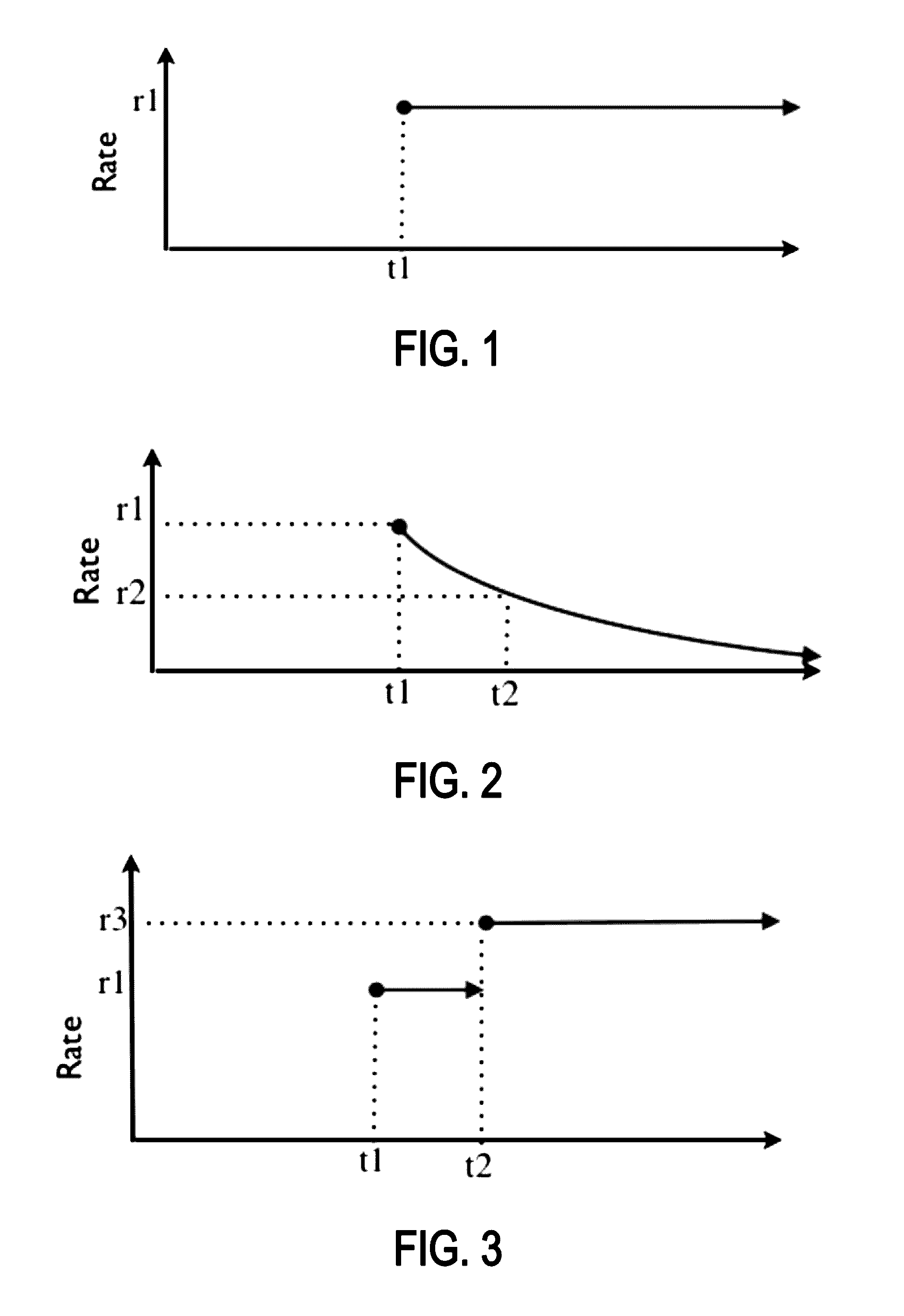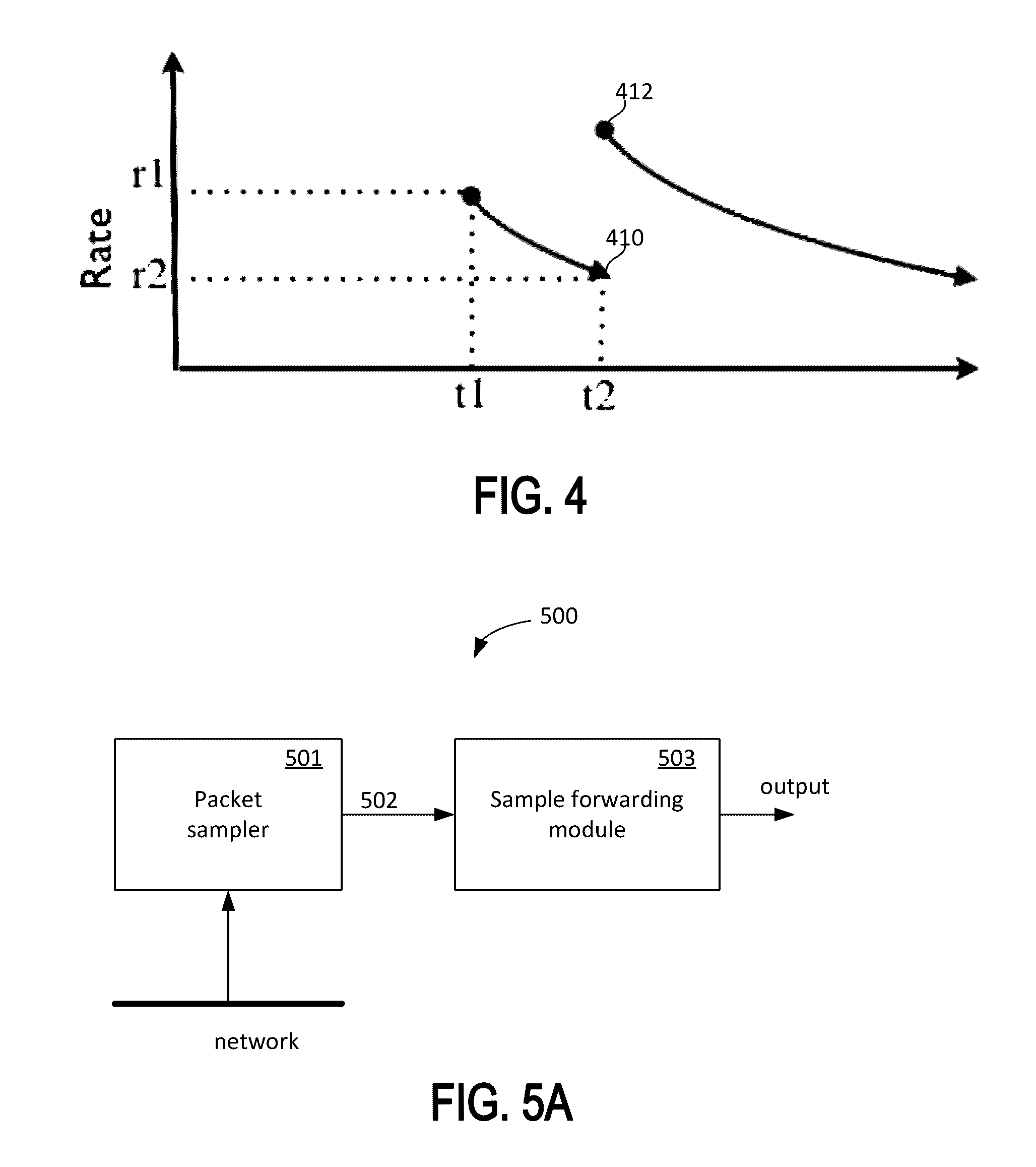Method for asynchronous calculation of network traffic rates based on randomly sampled packets
a network traffic and packet sampling technology, applied in the field of network monitoring system and method for asynchronous calculation of network traffic rate based on randomly sampled packets, can solve the problems of delay of up to two minutes, and inconvenient monitoring of packets
- Summary
- Abstract
- Description
- Claims
- Application Information
AI Technical Summary
Benefits of technology
Problems solved by technology
Method used
Image
Examples
Embodiment Construction
[0032]This invention makes use of recent advances in network traffic monitoring. In particular, one embodiment of the invention makes use of the sFlow packet sampling technology (U.S. Pat. Nos. 6,894,972 and 7,164,657) that is widely incorporated in network equipment.
[0033]The present invention adapts the concept of digital signal processing to analyzing asynchronous data that arrives at irregular spaced time intervals. In accordance with embodiments of the present invention, a conventional first order low pass filter may be used to process periodic input values and to update state variables and calculate corresponding output values.
[0034]The low-pass filter system can be described in the following equations:
RC=time constant of the filter (in seconds)
dt=sampling period (in seconds)
filter constant a=dt / (RC−dt)
y[i]=a*x[i]+(1−a)*y[i−1]
where y[i] is the current output signal, x[i] is the current input signal, and y[i−1] is the previous output signal.
[0035]It is noted that the current ou...
PUM
 Login to View More
Login to View More Abstract
Description
Claims
Application Information
 Login to View More
Login to View More - R&D
- Intellectual Property
- Life Sciences
- Materials
- Tech Scout
- Unparalleled Data Quality
- Higher Quality Content
- 60% Fewer Hallucinations
Browse by: Latest US Patents, China's latest patents, Technical Efficacy Thesaurus, Application Domain, Technology Topic, Popular Technical Reports.
© 2025 PatSnap. All rights reserved.Legal|Privacy policy|Modern Slavery Act Transparency Statement|Sitemap|About US| Contact US: help@patsnap.com



